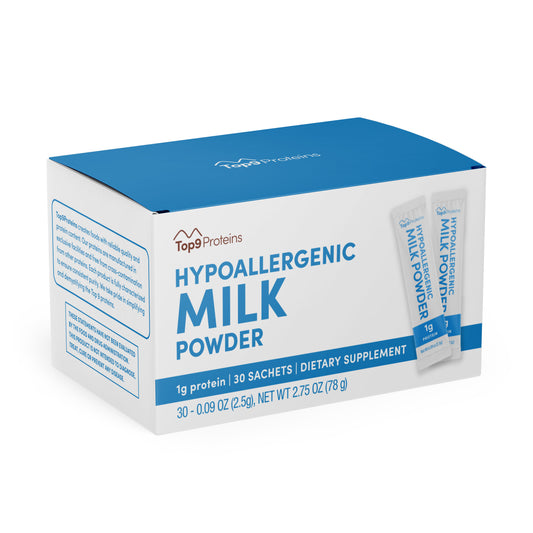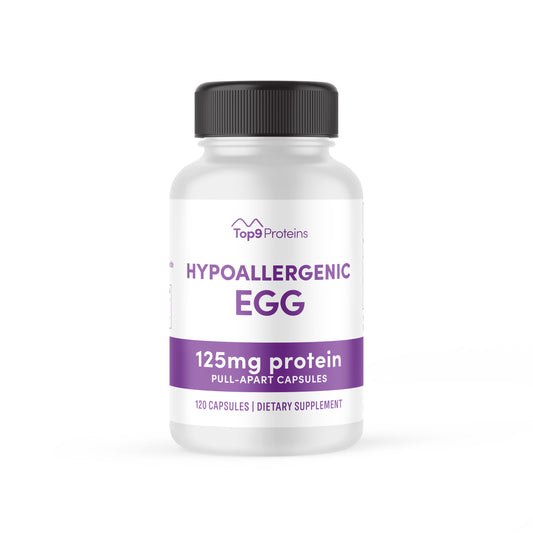IgE-mediated food allergy now affects approximately 30 million Americans, with symptoms ranging from moderate to severe, life-threatening anaphylaxis. The immune response called “food allergy” involves innate and adaptive immune cells. During sensitization, after recognition by dendritic cells, the body builds a repertoire of IgE antibodies. This immune memory enables a rapid and global immune response on re-exposure.
Normal tolerance of foods is a long-sought after goal. Antigen-specific immunotherapy (SIT), consisting of gradually increasing doses of allergen, has been used for over 100 years for the treatment of allergic disease. Despite this long history, and the clear preference families have for normal tolerance of foods over symptom control, for many people, repeated exposure to allergens is simply unbearable. Due to immune memory, each exposure can cause a range of symptoms, which may vary based on the person's baseline health, hormonal status, and metabolic stress.
Hypoallergenic proteins are designed to remove the plurality of IgE-binding epitopes, thereby reducing overall IgE-binding on presentation, and reduce the range and severity of symptoms a person might experience. These hypoallergenic proteins are designed to retain all linear epitopes in an effort to maximize the binding of neutralizing antibodies and T-regulatory cell recognition. In short, hypoallergenic proteins have modified structures with the goal of decreasing allergenicity associated with adverse responses and increasing immunogenicity associated with successful immunotherapy, and may allow for higher serving sizes in a shorter time course.
Protein Processing
The most common and well-known method of removing conformational epitopes from allergens is by heat denaturation. Extensively heated foods such as baked egg and milk, have been long known to be better tolerated by allergic individuals, and have a body of literature demonstrating their efficacy in dietary advancement.
While there are multiple examples of structurally altered or cleaved peptide proteins (standardized carbamylated allergoids, peptides, etc.), that have been created, these are not considered foods and often employ chemicals in processing which are not safe for human consumption.
Top9Proteins does not use any processing methods outside of those commonly used in food manufacturing such as heat, acidity, basic solutions, pressurization. All ingredients used are certified as GRAS (generally regarded as safe) and have a long history of safe human consumption. The resulting hypoallergenic proteins, while denatured and aggregated, are nutritionally equivalent to the starting food sources. Top9’s hypoallergenic proteins are free of adjuvants, or chemicals. In some cases, our hypoallergenic proteins may be combined with safe excipients to improve packaging accuracy.
Allergenicity Assessment
Top9Proteins hypoallergenic proteins have demonstrated reduced allergenicity. The proteins have been evaluated for total protein content, integrity, and purity. An example of allergenicity assessment from Hypoallergenic Egg shows an 85% reduction in polyclonal IgG binding relative to the National Institute of Standards in Technology (NIST) egg standard. Additionally, the Hypoallergenic Egg demonstrates allergenicity equivalence to baked egg produced following the Mt. Sinai Baked Egg method. For additional information regarding the hypoallergenic proteins, please contact us via our Partnering Page.
References
Smarr CB, Bryce PJ, Miller SD. Antigen-specific tolerance in immunotherapy of Th2-associated allergic diseases. Crit Rev Immunol. 2013;33(5):389-414. doi:10.1615/critrevimmunol.2013007046
Johansen P, Senti G, Martínez Gómez JM, Wüthrich B, Bot A, Kündig TM. Heat denaturation, a simple method to improve the immunotherapeutic potential of allergens. Eur J Immunol. 2005;35(12):3591-3598. doi:10.1002/eji.200535076
Anagnostou A, Mack DP, Johannes S, et al. The Safety and Efficacy of Baked Egg and Milk Dietary Advancement Therapy: A Systematic Review and Meta-Analysis. J Allergy Clin Immunol Pract. 2024;12(9):2468-2480. doi:10.1016/j.jaip.2024.06.016




